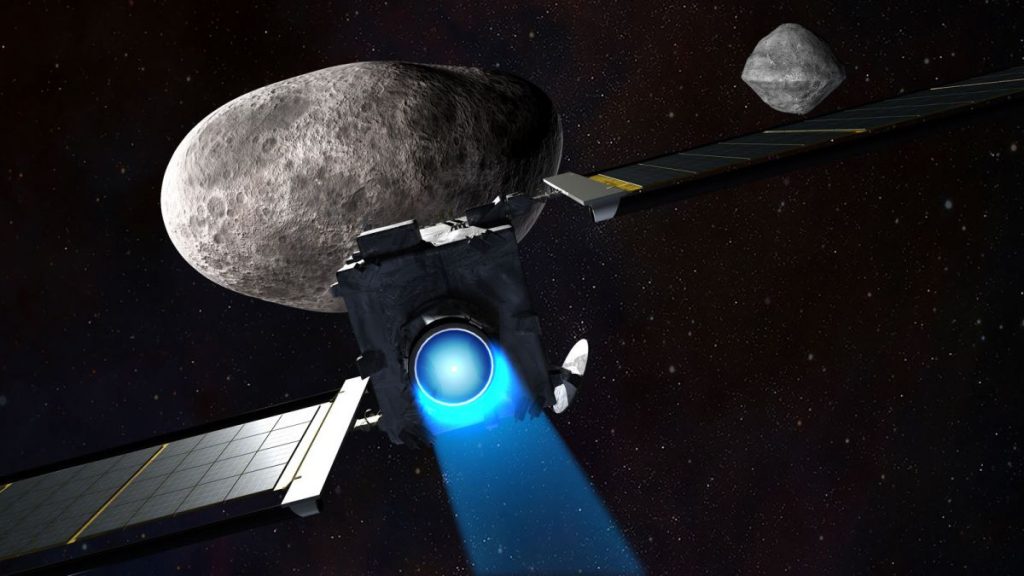
Why did NASA pick Didymos for its asteroid-crash mission? (Image Credit: Space.com)
How do you pick one asteroid out of thousands for a space mission?
NASA made that tough choice with its Double Asteroid Redirection Test (DART), which aims to slam a spacecraft into the moonlet Dimorphos on Sept. 27.
DART aims to alter the orbit of Dimorphos around its parent asteroid, called Didymos, In the first-ever test of the “kinetic impactor” planetary defense technique. To be clear: Scientists have found no asteroid that poses an immediate threat to human civilization. But NASA has emphasized the importance of planning now, to get ready for a scary scenario in the future.
Related: NASA’s DART asteroid-impact mission will be a key test of planetary defense
Choosing the right target was essential to getting the science done correctly. NASA and the Johns Hopkins University Applied Research Laboratory, which are working together on the mission, said there were a few things that made the binary asteroid system ideal for this critical mission.
“The Didymos system is an eclipsing binary, meaning that from our vantage on Earth, Dimorphos regularly passes in front of and behind Didymos as it orbits,” JHUAPL officials wrote in a DART fact sheet (opens in new tab).
Because the duo are relatively easy to observe from Earth, telescopes on our planet can view any changes in brightness that occur as the moonlet orbits the parent asteroid. Such variations reveal the length of time it takes for Dimorphos to orbit Didymos. Any change to the current situation will indicate that DART managed to alter Dimorphos’ orbit, at least a little bit.
The test location is also ideal because the two asteroids pose no threat to our planet, mission team members emphasized. Moreover, the Didymos system is only 6.8 million miles (11 million kilometers) from Earth, meaning that spacecraft can get there relatively quickly. Indeed, DART launched just last November; its 10-month journey is quite quick for a space mission.
Related: How big is the asteroid threat, really?
The short distance between our planet and the asteroid system also makes it easier for telescopes of multiple sizes on Earth to conduct what mission team members describe as an “observation campaign to determine the spacecraft’s effect” on the asteroid. In other words, a range of professional telescopes may be able to participate, since the target will be relatively bright even in smaller observatories.
If DART succeeds, the spacecraft should shorten Dimorphos’ orbital period “by several minutes,” officials stated, but it will take weeks for telescopes to confirm that. A follow-up mission, the European Space Agency’s Hera, will fly by the system later in the 2020s to view any crater up close and to make other measurements.
Follow Elizabeth Howell on Twitter @howellspace (opens in new tab). Follow us on Twitter @Spacedotcom (opens in new tab) or Facebook (opens in new tab).





